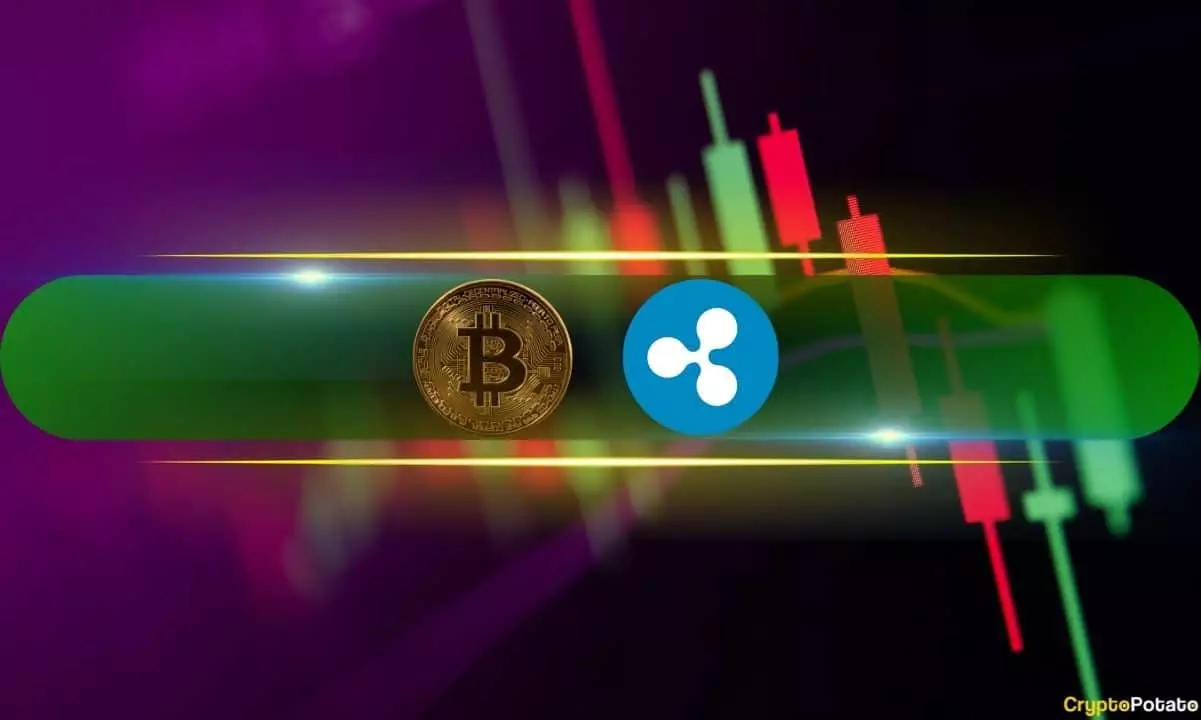Bitcoin’s tumultuous journey has often reflected the broader sentiments of the financial landscape, and its recent surge after a steep decline serves as a testament to this volatile dance. After plunging to a critical support level of $81,000, Bitcoin bounced back and has added an impressive $3,000 since then. This may not only reflect market optimism but also the resilience of a sector that often teeters on the brink. The cryptocurrency realm notoriously swings between euphoria and despair, leaving investors grappling with anxiety. However, the swift recovery from this downturn raises crucial questions: Where are we headed next, and can we trust these patterns?
Altcoins Join the Recovery Parade
It’s intriguing to note that the altcoins have seemingly danced in tandem with Bitcoin’s fortunes. After the sharp dip, several major altcoins such as Ethereum (ETH), XRP, Dogecoin (DOGE), and Cardano (ADA) have rebounded spectacularly, suggesting a reinvigorated market confidence. With ETH witnessing a 5% jump to nearly $1,900 and XRP closely trailing at 5.5%, it’s clear that the broader market’s rebound is not a mere fluke. What many see as a fleeting recovery could instead signify a critical rebranding of altcoins as formidable players, no longer dependent solely on Bitcoin’s supremacy.
Understanding the Market’s Dynamics
While it’s easy to get swept up in the excitement of a rebound, one must remain vigilant about underlying market dynamics. Bitcoin had initially shown promising signs of breaking through the weekend consolidation levels, jumping to a 17-day peak of nearly $89,000 before facing downward pressure. Such a rapid ascension is typically followed by skepticism; after all, lofty valuations often result in equally dramatic corrections. The market saw BTC plummet within hours from $87,500 to $83,500, illustrating just how fragile these highs can be when investor sentiment shifts.
This brings us to an essential discourse about market manipulation and the role of institutional involvement. Are these fluctuations merely the byproduct of speculative trading, or are larger forces at play shaping the market’s trajectory? The rise of decentralized finance (DeFi) has democratized investment but introduced complexities in governance and sustainability.
The Altcoin Surge: Is It Sustainable?
The recent rally in altcoin prices is compelling, with tokens like EOS and Aave showing staggering growth rates of 14% and 10%, respectively. Yet, while this surge is exhilarating, skepticism remains around the sustainability of these remarkable gains. Are investors simply riding a wave of temporary market enthusiasm, or is there a fundamental shift brewing? The total market cap has expanded significantly — over $70 billion added in a single day, bringing it to $2.83 trillion. This rapid inflation could be masking deeper issues within the crypto ecosystem that require scrutiny.
The central question now becomes whether this momentum can withstand critical resistance levels in light of potential external economic pressures. Signs of a bullish market are engaging, but one must not lose sight of the true nature of risk in the crypto landscape. The volatility that characterizes cryptocurrencies could easily flip this narrative from optimism to caution, revealing the delicate balance investors must navigate.
The crypto domain remains a swirling mix of hope and trepidation, teetering on the edge of potential breakthroughs or new pitfalls. This complexity mirrors the very essence of financial life itself, where opportunities for growth often emerge hand in hand with the specter of failure.















